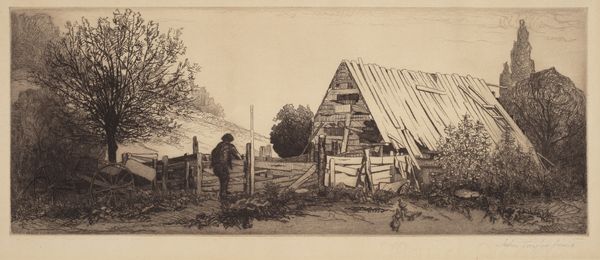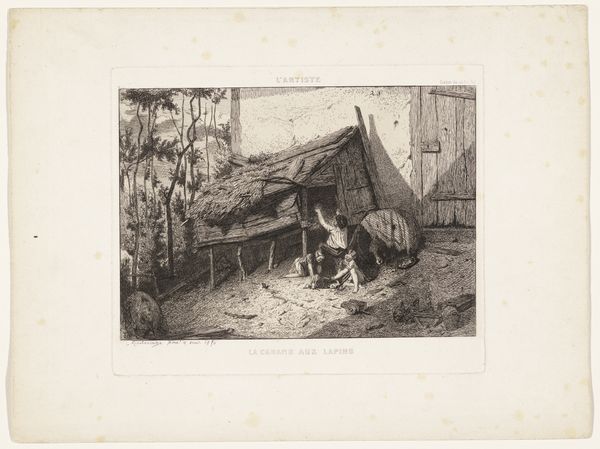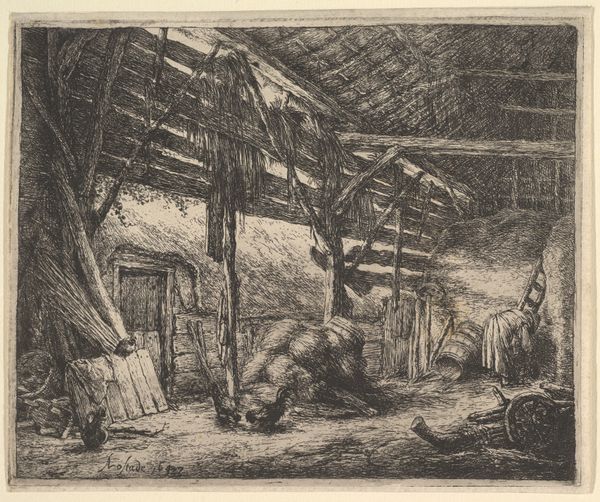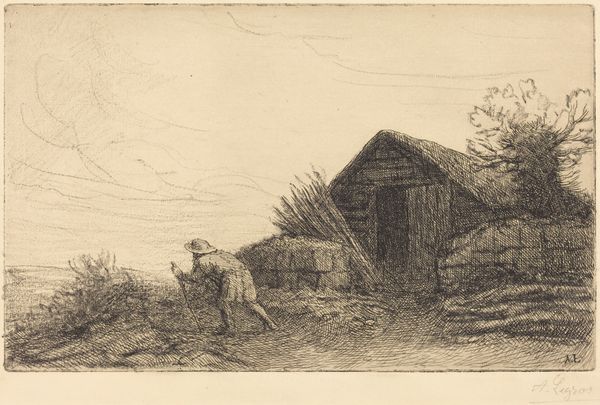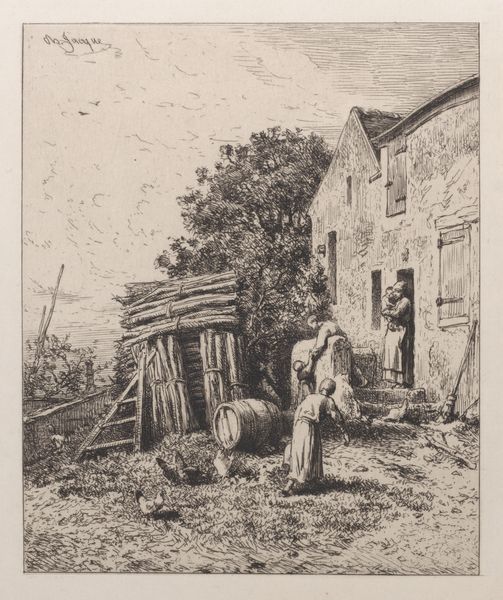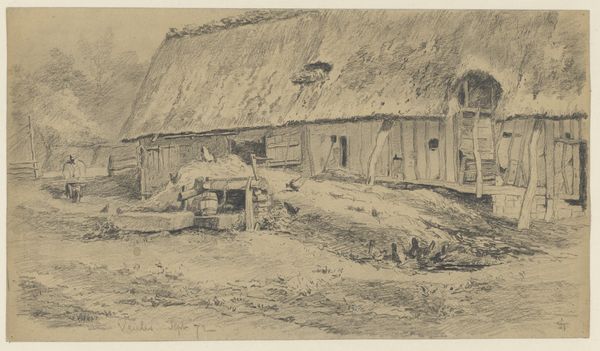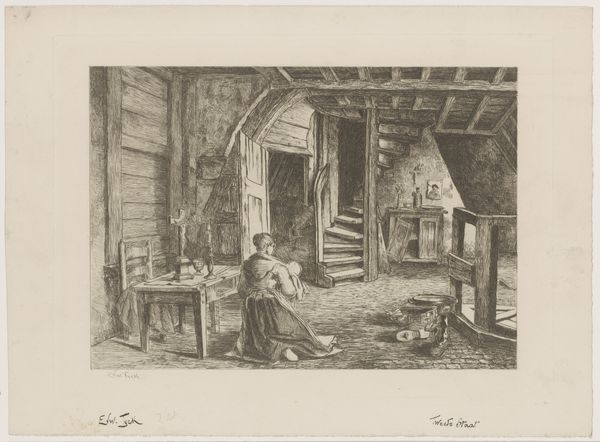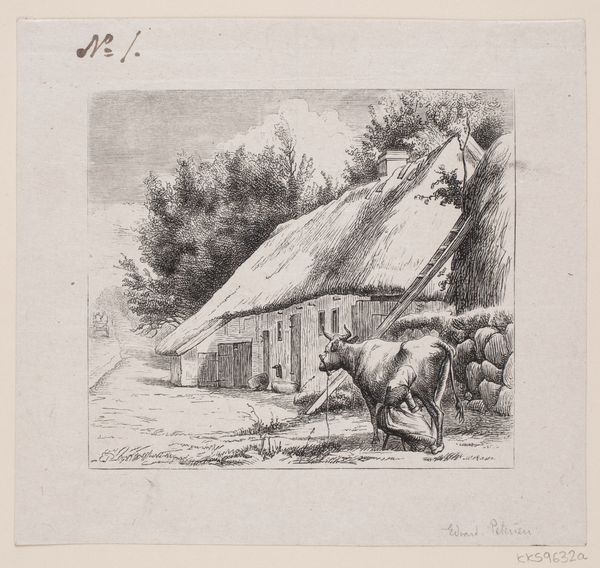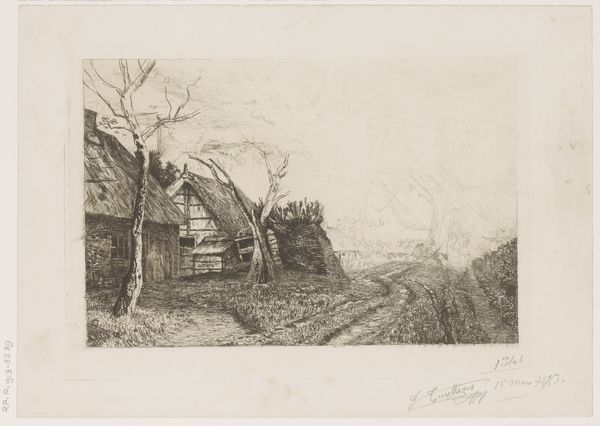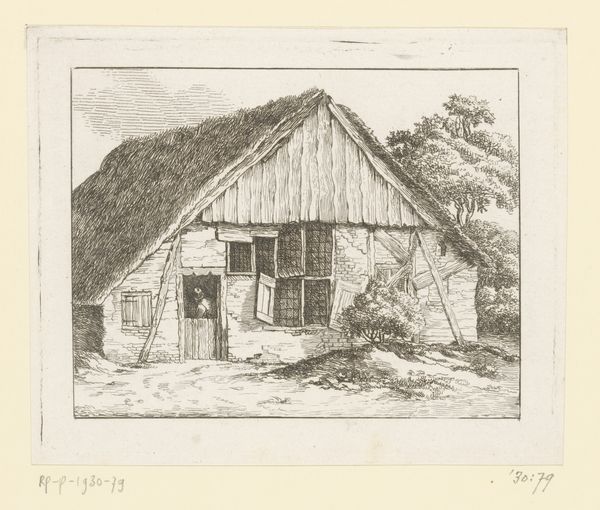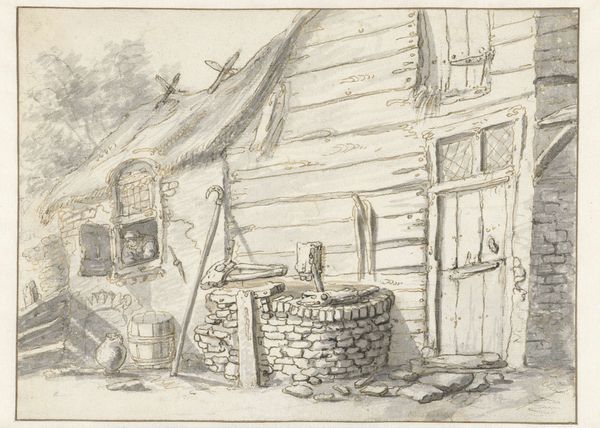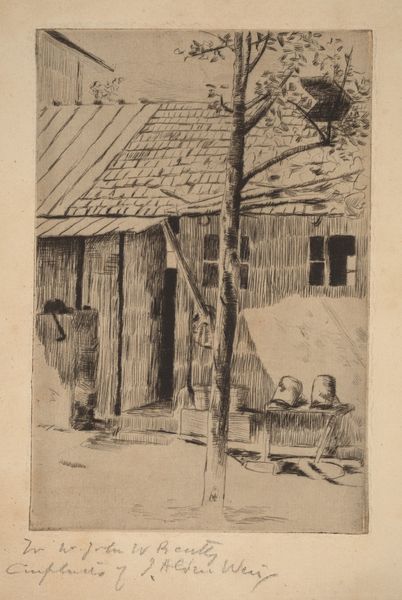
drawing, print, engraving
#
drawing
# print
#
human-figures
#
landscape
#
genre-painting
#
engraving
Dimensions: sheet: 7 11/16 x 10 1/16 in. (19.6 x 25.5 cm) plate: 4 5/16 x 5 11/16 in. (11 x 14.5 cm)
Copyright: Public Domain
Curator: Standing before us, we have Charles Jacque's "Coin de ferme," which translates to "Corner of the Farm." This engraving, dating between 1813 and 1894, offers a glimpse into rural life. What’s your first reaction? Editor: It’s a beautifully etched little world! Sort of like a memory bubbling up, full of quiet, cozy… dirt. A realistic but also softened representation. Look at how the figures blend right in. Curator: Exactly! And that's quite characteristic of Jacque, you know. This artist saw and explored farm settings a lot, especially since he actually reared chickens as a young man! Jacque was influenced by the Barbizon School, so this romantic naturalism, is kind of central to the piece. Editor: It speaks to broader issues of agrarian economies and social stratifications and divisions of labor. I wonder, in a period riddled with social uprisings, if such renderings idealize or truly capture quotidian reality? The relationship with peasantry is not without complexities, because what can the artwork convey in a non-didactic manner? What about subaltern people’s perspective? Curator: Absolutely, that lens provides such a good historical awareness. At first glance you would see an endearing family scene and picturesque architecture. Then the question arises about which elements are either overlooked, romanticized, or entirely removed. For instance, that's something similar that comes up when discussing the topic of urban poor as seen in Édouard Manet's The Absinthe Drinker! I understand how art may be a lens through which existing narratives are scrutinized, validated, and changed. Editor: Yes, precisely! It urges to dissect this representation through a modern socio-historical understanding of agrarian spaces. For me it also calls in intersectionality in feminist studies: this emphasis on a patriarchal idea where the male body is labor force and has dominion. We must reflect on this to analyze it through the lens of art to dissect what these artworks can represent in contemporary society, such as class struggle or even capitalist extraction. Curator: So well expressed. Now that's what I call a good perspective shift. Looking at the technical side, Jacque does a fantastic job with light and shadow. The details in the wood grain, the hay… even the textures of the figures' clothing make this piece feel so immediate and present, so tangible. Editor: Which makes me think again, whose hands did this artist portray? Were these subjects anonymous rural laborers in his farm, family or a social-realist project aiming to represent them for historical purposes? Thinking of their voices, and even their shadows is fascinating to explore in depth in further studies. Curator: To summarize then, a rustic scene, both personal and historical, with shadows and tones telling countless untold stories about life, struggle, family, gender, nature, survival, and who knows, maybe also about secrets hidden within hay barns?
Comments
No comments
Be the first to comment and join the conversation on the ultimate creative platform.
